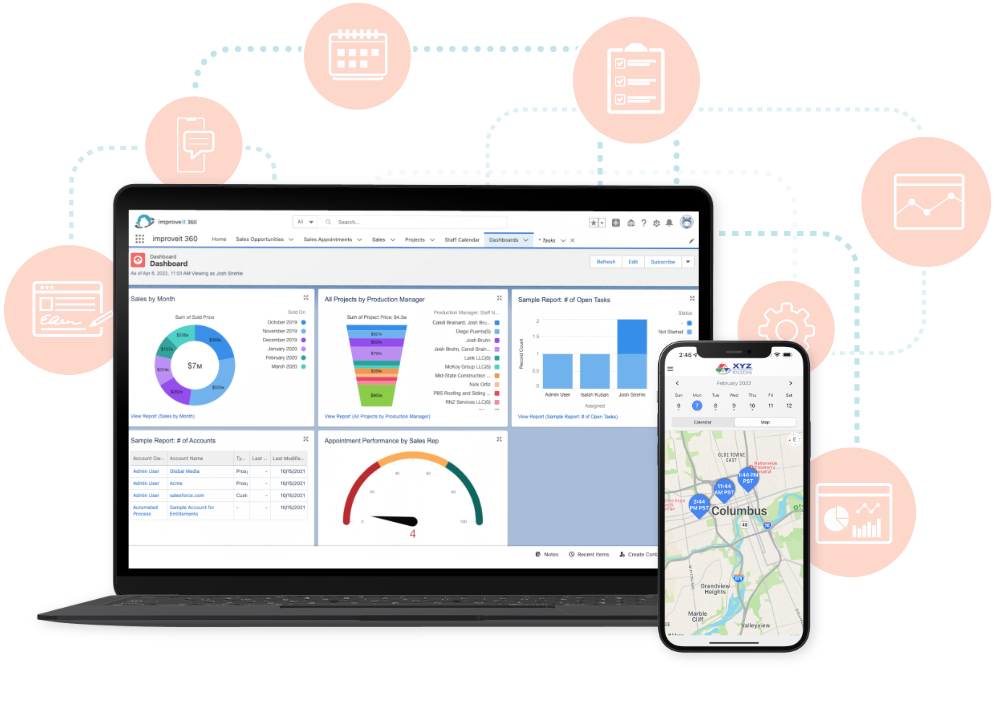The Great Resignation is everywhere. It’s on the news, across your social media feed, and most likely in your workplace. In March 2022, a record 4.53 million US workers quit their jobs causing a labor shortage, trumping the previous high of 4.51 million in November 2021.

Over the course of the pandemic, people had an unprecedented opportunity to reassess their values. Now, as the world returns to (almost) business as usual, employees are seeking a greater work-life balance, and they are expecting company leaders to deliver it. In some cases creating a labor shortage.
Construction is not immune to these changes. In April 2022, the industry had a quit rate of 2.9, up from 2.5 in April 2021. That means almost three people quit for every 100 workers. As they face significant labor shortage and a lack of interest from younger generations who continue to be swayed by the appealing remote work structure, business leaders must pivot or perish. Which way the pendulum swings comes down to one thing: culture.
A positive, engaging, and fair workplace culture plays a significant role in employee retention. One-third of job seekers would reject their perfect job if the culture were a bad fit. In addition, 72 percent of employees noted corporate culture as a major consideration when deciding whether to work at a company. Tellingly, 32 percent of new hires who left a role within the first three months cited culture as the reason.
How can you reimagine your home improvement company’s culture to better meet the needs of today’s employees? Here are seven strategic tips you can implement to combat the construction labor shortage and thrive, whatever the industry throws your way.
1. Focus on Employee Well-Being
Home improvement is not easy. Construction is not easy. It’s physical and demanding. It takes a toll on the body. As a leader, it’s essential you recognize this and show your appreciation by enabling employee well-being initiatives.
Well-being has become a bit of a corporate buzzword – a box to tick. However, when implemented thoughtfully and intentionally, it can improve the employee experience, bolster the relationship between employees and leaders, enhance productivity, and ultimately contribute to retention.
If you’re still not convinced, consider the figures. More than three in four employees agree with the following statement: “employers have a responsibility for the health and well-being of their employees.” What’s more, company mental health expenses have skyrocketed 10 percent annually, twice the rate of other medical costs. Research by Mental Health America suggests that for every $1 a company spends on well-being and mental health care, it will get $4 back.
Employee well-being will look different in every company. It’s about shaping a collective mindset that accepts mental health and upholds the values of equality and social justice. Mental health awareness should be incorporated into health and safety procedures and processes. Leaders should promote psychological safety by ensuring their employees’ concerns are heard and acknowledged.
2. Celebrate Wins and Losses
From the apprentices to the executives, every single person within a home improvement company likes to feel appreciated for their achievements. So, build celebration into your workplace culture to allow all wins to be publicly acknowledged — however big or small.
In addition, celebrate the losses. It sounds counterintuitive, but it enhances employee engagement by encouraging experimentation and innovation. Think about it this way: If an employee is afraid of being ridiculed for having an unsuitable idea, they won’t voice it. But, if employees feel comfortable enough to share their creativity with the team, everyone wins — the company’s bottom line included.
Today’s business landscape is competitive, and with a labor shortage of top talent, home improvement companies must encourge the people they’ve got. Allow space for creativity, as one employee’s idea can become an organization’s competitive advantage.

3. Invest in Professional Development Opportunities
In-house training or reimbursement for external professional development opportunities demonstrates to your employees that you care about their careers and are willing to invest in their success. This helps cultivate a long-term relationship, which translates into employee retention.
For example, you might give your employees the opportunity to become licensed in a particular trade. You might also offer leadership and management training, allowing you to promote from within rather than bring in outside talent when a position opens up.
Ongoing training and development also builds a continuous improvement culture, a value that seeps into employees’ day-to-day, encouraging them to follow their interests and spend time refining their skills.
4. Establish Trust Between Leadership and Employees
Construction companies often fall into the trap of separating into two groups: office workers and on-the-job teams. As a result, a divide can grow between the two groups, and hands-on job site employees may come to resent office workers who “just don’t get it.”
The antidote to this trap is trust. Both sides of your home improvement must trust each other to act for the good of all. Of course, this won’t happen overnight. Leadership, for example, must consciously earn employees’ trust over time — through actions, not only words.
You can nurture trust by ensuring you are accessible and easily contactable. In addition, your behavior and decision should always be in line with company values. Double standards for leadership and employees do little to earn you trust. Finally, lead by example, even when you make mistakes. By admitting to your wrongdoings, you demonstrate accountability and honesty.
5. Build Employee Engagement
An engaged employee is enthusiastic and motivated to complete their work. They feel connected to the organization they work for because they can see how their efforts contribute to overall success.
Building employee engagement is undoubtedly in your best interest as a home improvement leader. Findings by Gallup show that highly engaged teams generate 21 percent greater profitability. In addition, teams within the top 20 percent in engagement experience 41 percent less absenteeism and 59 percent less turnover.
According to that same report, engaged organizations share the following practices:
- They build a culture of engagement from the top down, meaning leaders are engaged in their work and consciously strive to engage employees.
- Leaders believe in employee engagement as a competitive advantage, regardless of their industry. They chase engagement as a strategic unique selling proposition.
- Communication is open, consistent, and non-judgmental.
- They focus on measuring success with data and implement learnings from data on an ongoing basis.
- They develop exceptional managers who value employee engagement and know how to nurture it.

6. Reduce Menial Administrative Tasks Where Possible
Your employees chose the home improvement industry for a reason. Perhaps they wanted to change people’s lives by transforming their properties. Or maybe they wanted to pursue a career that allowed them to work with their hands. Perhaps they wanted to be involved in large and exciting projects so that they could leave their mark on the world. Whatever the reason, it likely had nothing to do with paperwork and admin. So, if you can reduce or eliminate repetitive data entry and other menial administrative tasks, you can boost morale, increase workplace satisfaction, and enhance employee retainment.
Alleviating your employees from mundane tasks will also reduce the rate of human error, protecting your business against mistakes that affect its reputation and the customer experience.
7. Empower Your Team with the Right Technology
Technology can change the game for your employees, and by investing in the right tech, you can boost engagement and attract top talent, particularly from younger generations.
Here are some of the ways the right technology can help your organization build a positive culture and combat the industry’s labor shortage:
- Technology automates repetitive tasks, which, as mentioned in tip 6, can increase productivity and reduce the chance of human error.
- Technology opens doors to meaningful communication and collaboration. For example, communication applications can empower job site team members to access the answers and information needed to make sound, data-backed decisions that align with business objectives.
- Technology ensures quoting accuracy, helping mitigate financial stress and providing a healthy cash flow.
- Technology facilitates education and training, another vital element of company culture we explored in tip 3.
- Technology streamlines the customer experience, and happy customers can boost employees’ morale.
- Technology allows for quick and easy goal setting, success measurement, and recognition. It gives you access to actionable insights that you can implement into your organization’s workflows.
- Technology reduces the risk of misunderstanding. Complex projects involving various teams across a home improvement company can be challenging to keep track of. Roles and responsibilities may be misunderstood. But, with project management technology, teams can rely on a single source of truth, so everyone is on the same page.
This is just the tip of the iceberg. Tech truly is your ticket to sustainable growth.
Leverage Technology to Thrive in Today’s Challenging Market Landscape
Improveit 360 is purpose-made for home improvement companies. Our all-in-one enterprise CRM system is built on the Salesforce platform and delivers predictable results and actionable insights about your operations, customers, and profits.
We’ve helped our clients, their teams, and their home improvement customers stay connected since 1999. Now, we’re ready to future-proof your business. Learn more or schedule a demo.
